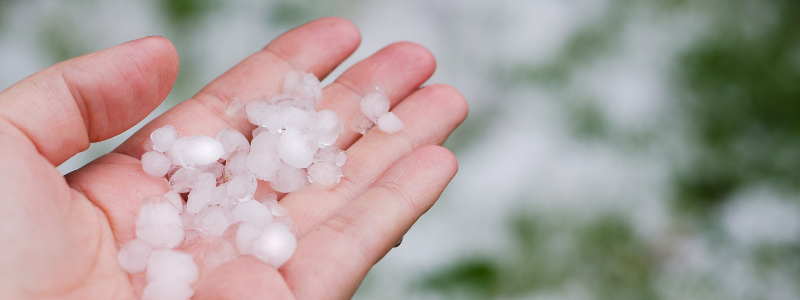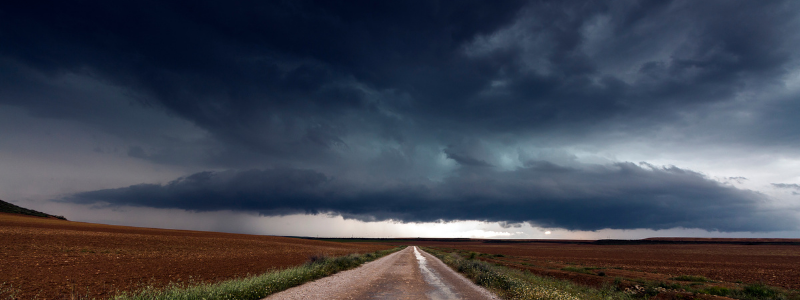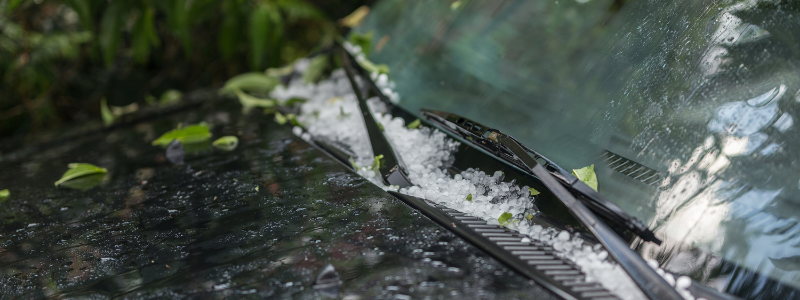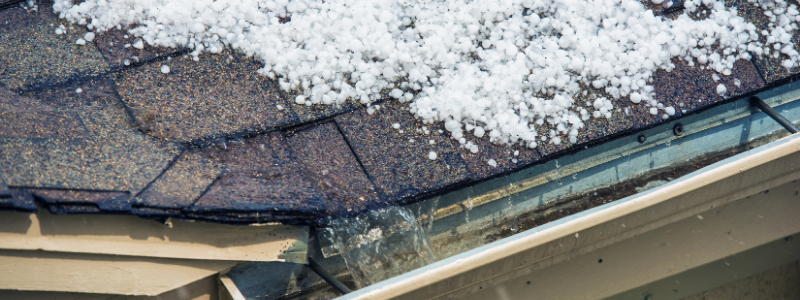
How to Prepare for Hailstorms
Hailstorms can be incredibly destructive, causing significant damage to homes and properties. For residents of Colorado, where hailstorms are a common occurrence, being prepared for these natural phenomena is essential. As a roofing company based in Colorado, B&M Roofing understands the importance of proactive measures to safeguard homes from hail damage.
In this article, we will provide valuable insights and practical tips on how to prepare for hailstorms. We will explore the necessary steps homeowners can take to minimize potential harm to their roofs, protect their belongings, and ensure the safety of their loved ones.
From inspecting the roof for vulnerabilities and reinforcing it with hail-resistant materials to installing protective coverings and implementing preventive maintenance strategies, we will delve into various approaches that can significantly reduce the impact of hailstorms on residential properties.
By adopting the proactive measures outlined in this article, homeowners can enhance their preparedness, safeguard their homes, and potentially avoid costly repairs or replacements in the aftermath of hailstorms. Let’s dive in and learn how to prepare for hailstorms effectively.
What is Hail?
If you live in Colorado, you know the damage hail can cause, but did you know that it is formed when water vapor in updrafts reaches a freezing point? Ice is formed and is suspended in the air by updrafts and falls down to be coated by water again.
This process can occur over and over again, adding several layers to the hailstone, which is how golf ball-sized hail can occur. While the average hailstorm only lasts five minutes, the damage can be extremely detrimental.

Signs of a Potential Hail Storm
There are a few signs that hail may fall, so if you notice these changes in the weather, start preparing. The sooner you prepare, the more you’ll be able to prevent hail damage.
- A solid (not gradient) wall of dark blue/grey clouds, in contrast with little-to-no clouds – These clouds bring a lot of moisture, along with a cold front. The two together mean a mixture of cold and rain.
- A sudden wave of wind gusts that are higher up in the air – A side draft (between updraft and downdraft) or fluctuating draft is a true sign that a violent thunderstorm is approaching.
- Thunder/lightning – This usually means rain is coming, and given the frequency, it could bring a quick hail storm, too. Not all thunderstorms bring hail, but all hail usually comes with a thunderstorm. So it’s good practice to be prepared any time you hear thunder.
- A quick drop in temperature – When it gets colder, it’s even colder in the atmosphere. This contributes to the creation of hail.

How to Prepare for Hailstorms
When it comes to hailstorms, preparation is key to minimizing potential damage to your home. By taking proactive steps and implementing preventive measures, you can protect your property and ensure the safety of your loved ones. Here are some essential tips on how to prepare for hailstorms:
- Inspect Your Roof Regularly
Perform a thorough inspection of your roof to identify any existing vulnerabilities. Look for signs of wear and tear, loose or damaged shingles, and weak spots that may be susceptible to hail damage. If you notice any issues, contact a professional roofing company like B&M Roofing to address the problems promptly.
- Reinforce Your Roof
- Install Protective Coverings
In areas prone to frequent hailstorms, installing protective coverings like hail guards or screens can provide an added defense for your windows, skylights, and other vulnerable areas. These coverings can help prevent shattered glass and minimize potential damage caused by hailstones.
- Trim Overhanging Trees
Trim any overhanging tree branches near your home, especially those that could potentially break or fall during a hailstorm. Falling branches can cause severe damage to your roof, siding, or windows when combined with hail impact.
- Secure Outdoor Items
Secure or move any outdoor furniture, equipment, or valuables that could be damaged by hail. Strong winds accompanying hailstorms can turn these items into projectiles, posing a significant risk to your property and others nearby.
- Have Emergency Supplies Ready
Prepare an emergency kit that includes essentials such as flashlights, batteries, first aid supplies, and non-perishable food items. Additionally, ensure you have a reliable method of communication, such as a charged mobile phone or a battery-operated radio, to stay informed about weather updates and emergency alerts.
By following these proactive measures and staying prepared, you can significantly reduce the impact of hailstorms on your home. Remember, the safety of your family should always be the top priority. If severe weather conditions are expected, consider seeking shelter in a designated safe area until the storm passes.
How to Prevent Hail Damage to Your Car
Cars can take quite the abuse from Colorado’s harsh weather, but there are a few ways you can protect your car from hail damage.
- Seek cover in covered parking/areas – If you’re on the road frequently (i.e. commuting) know where the closest parking garages are so you can safely ride out the storm. If you can’t reach a garage before the storm hits, pull under an overpass, gas station canopy, or similar spot that can help protect you and your car from hail. Even the overhang from trees may be enough to slow the hail down enough from damaging your car.
- Face the hail head-on – If you can’t find cover, drive into the hail so that the hail hits your windshield rather than your side and rear windows. Your windshield is much stronger than the other windows.
- Park on the side of the building, opposite of the wind direction – If overhead cover isn’t available, try and park on the opposite side of the building from the direction the wind is blowing. The hail may not reach your car as much.
- Use blankets to cover the car – If you can’t get your car to shelter, raid your linen closet and cover the car with any thick blankets, comforters, or even large towels. The more layers, the better!
- Use cardboard to cover the car – Cardboard may also serve as a good source of “padding” and protection against hail. Place it under your windshield wipers to keep them from moving around and the cardboard layers can usually take the brunt of the hail impact.
- Use floor mats to cover the car – If nothing else is available, your car’s floor mats are a great option to use as protection from hail. Place the floor mats carpet-side-up, under your windshield wipers. For side windows, you may have to wedge them up into the rubber window lining.

How to Prevent Hail Damage to Your Home
Some hail damage is inevitable, but there are a few good tips that will help limit damage, if any, to your home.
- Close curtains – Make sure to close any curtains or blinds, so that if your windows break, no glass or debris gets blown into the home.
- Trim trees/branches – While the weather is nice, be sure to maintain your trees and shrubbery in your yard. Especially for those taller trees that are closer to your roof, remove any weak branches.
- Protect outdoor furniture – Bring all patio and lawn furniture inside or under a covered area.
- Close umbrellas/canopies/tarps – Hail will rip these fabrics to shreds, so keep them closed when a storm approaches.
- Consider window coverings – Things like hinged shutters or metal awnings may be a good idea, as they’re easier to replace or repair than broken windows.
As we mentioned, some hail damage to your home is inevitable, like damage to your roof. Your home’s roof may take the brunt of the hail impact, but the cost to fix/repair/repair roof shingles is much less compared to other things in and around your home.
How to B&M Roofing Can Help With Hail Damage
B&M Roofing isn’t just another “storm chaser” company. We’re local, we’re experienced, and we’re honest. We’ve seen a hail storm or two and know just exactly what types of damage to expect and look for. If we can save you costs, we will.
- Roof inspections – Call B&M Roofing to inspect your roof shingles for wind or hail damage after a hailstorm.
- Durable, storm-grade materials – The roofing materials offered by B&M Roofing are the most impact-resistant roofing materials, proven to be able to withstand Colorado weather. We only work with the most trusted roofing material companies.
- Proactive maintenance – Early in the spring months, like March or April, we can take some preventative measures with preparing your roof for the hail season.
After a serious hailstorm, be sure to call your insurance company to schedule a damage assessment and then give B&M Roofing a call to make any necessary repairs. At B&M Roofing, we service everything from small residential roofs to large, complicated commercial properties throughout Colorado and surrounding areas.




































